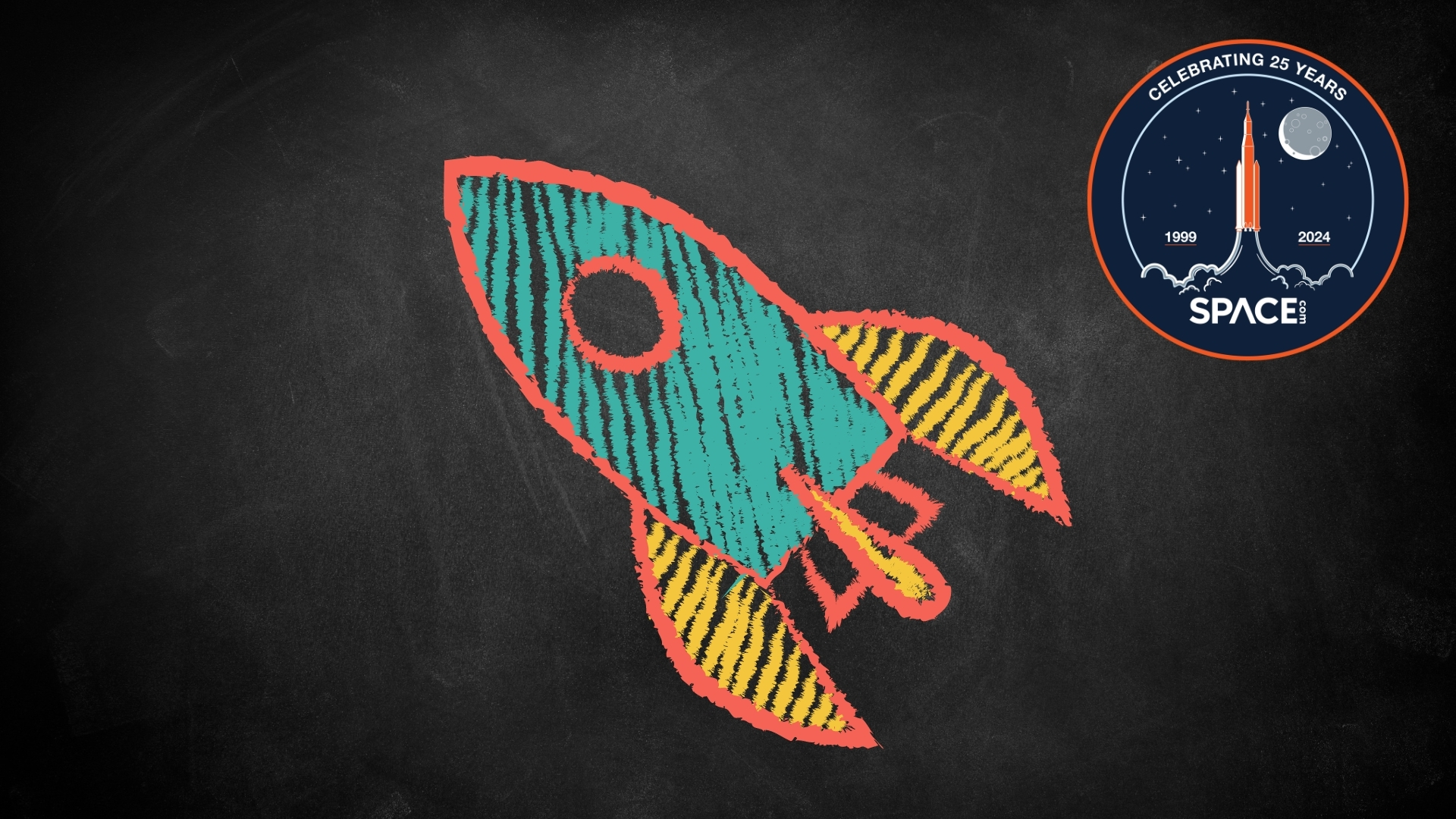
Project 1: Make a straw rocket
In this project, you will need:
- A piece of paper or template
- A pencil
- Scissors
- Tape
- Tape measure (optional)
Cut out the "rocket body" from your template — the rectangle that will form the main part of the rocket (known as a fuselage). Wrap this rectangle around your pencil, taping it to make a cylinder. Next, cut out the fins from the template and tape them at 90-degree angles to the rocket fuselage near the eraser of your pencil.
Related: Learn about Space with these awesome NASA education videos
Now make the nose cone by twisting the opposite end of your rocket body around the tip of the pencil to make a cone.
Remove your pencil and replace it with a straw. This rocket will be powered by your breath! Blow on the straw and see how far your rocket flies!
Now create a new rocket and change one thing about it — maybe the fins, the nose cone, or the weight of the paper. Keep making changes one by one and recording how far your rocket flies. What is the best combination? This process is called optimization and it's how engineers design the best rockets in real life!
Project 2: Make a stomp rocket
In this project, we will also optimize our rocket — by changing the fin or nose cone shape — but we'll take it one step further by calculating how high your rocket is flying.
First, we will make the launcher. You will need:
- Several lengths of half-inch PVC pipe
- 2 PVC tee connectors
- 2 PVC elbow connectors
- 2 PVC slip caps
- An empty 2-liter bottle
- Duct tape
The rocket launcher can then be assembled following the instructions.
For our rockets, we will need:
- A piece of paper (any kind — even experiment with different types!)
- Masking or scotch tape
- Scissors
- A pencil
Wrap the paper around a PVC pipe snugly to make your fuselage. Tape it along the length of the paper. Now experiment with different shapes of fins. You can make them triangles, squares, half circles, and so on. Fins help with the stability of your rocket, so experiment to see which works the best.
For the nose cone, you can try a few different things. You can pinch the top of your fuselage and tape it closed. You can also make a nose cone by tracing and cutting out a circle. Cut out a fourth of the circle and then curl the rest around to form a cone.
To assemble the stomp rocket, place the rocket on the end of the launcher. Then stomp on the 2-liter bottle to see how high your rocket goes!
We can calculate the height of the rocket using two people and a little math. Have two people stand a certain distance from the rocket in opposite directions and measure the angle of the highest altitude the rocket reaches using an altitude tracker. This can help you to calculate the height of the rocket.
How do different features, like the nose cone, fin shape, or weight of paper change how high the rocket goes? Does the same rocket always reach the same height, or does it depend on how hard the launcher is stomped? What happens if you use more people to measure the angle of the altitude of the rocket? Do they all obtain the same number? If not, why?
Project 3: Make a foam rocket
For this project, you will need:
- A piece of paper (any kind — even experiment with different types!)
- Masking or scotch tape
- Scissors
- A pencil
Cut about 11.8 inches (30 centimeters) of the foam pipe. Cut four slits about 3.1" (8 cm) long along the bottom of the pipe. Tie about a 27.5" (70 cm) length of string into a loop, and then zip-tie it to a rubber band. Thread the loop of string through the pipe until the string is sticking out of one side and the rubber band is sticking out the other. Use a second zip tie to tighten the top of the rocket (the end with the rubber band).
Use your stiff material to cut out fins, nesting them together and placing them carefully between the slits on the tube. Use the last zip tie to close the end of the rocket.
— Whip up a moon-like crater
— How to make a comet
— Inflatable planetarium — Stories in the sky
— How to recreate a solar eclipse
Now we can launch! Go outside and attach the rubber band to the end of the meter stick. Attach the altitude tracker to the 23.6" (60 cm) mark.
Pull back the rocket so that its nose is at the 23.6" (30 cm) mark. Now try launching the rocket at different angles. How far does it go at different launch angles? Can you optimize the launch angle? Why does this angle allow the rocket to travel the farthest?







